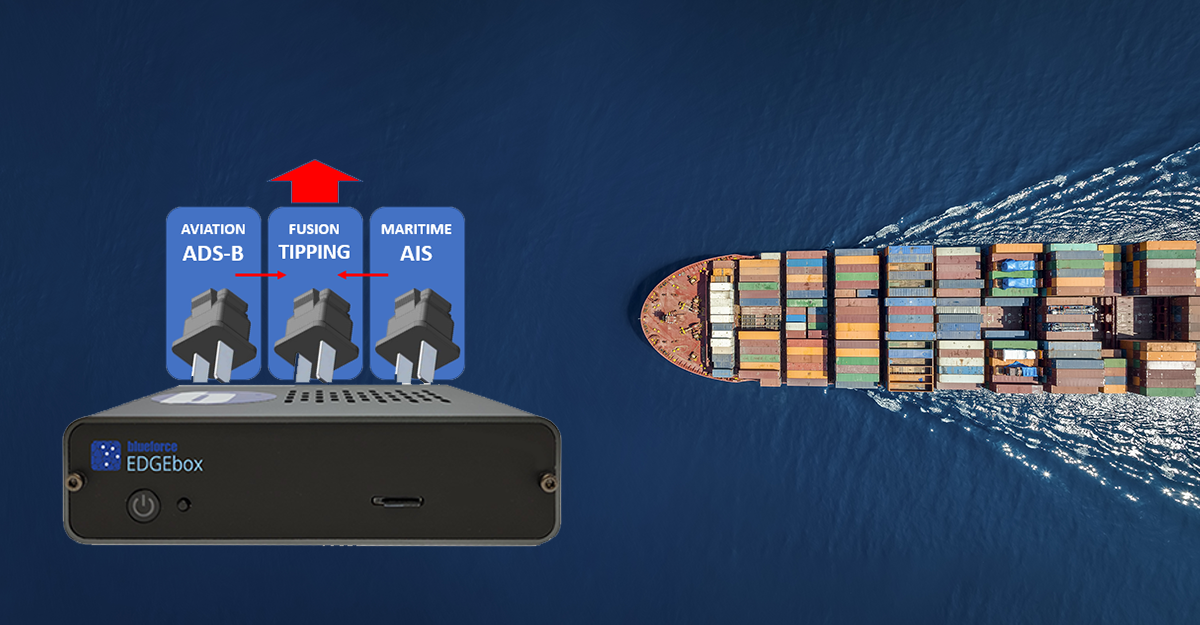
Air and Maritime Domain Awareness: Blueforce Announces Support for ADS-B and AIS as a Composable Service
While “domain awareness” has been a long-standing requirement for military and counter-terrorism operations, Blueforce has been hearing this more and more for incident management in the public safety and emergency management spaces. Domain awareness is of paramount importance for emergency managers as it provides a comprehensive understanding of the operating environment in which emergencies or disasters occur. Here are several reasons why domain awareness is crucial for emergency managers:
- Situational Understanding: Domain awareness enables emergency managers to have a real-time and accurate picture of the situation at hand. It involves gathering and analyzing information about the physical, operational, and social characteristics of the affected area. By having a complete situational understanding, emergency managers can make informed decisions, allocate resources effectively, and develop appropriate response strategies. Domain awareness helps identify potential hazards, assess risks, and anticipate challenges, allowing for proactive and timely responses to mitigate the impact of emergencies.
- Resource Allocation and Coordination: With domain awareness, emergency managers can determine the availability and location of critical resources within the affected area. Blueforce has been providing awareness of personnel, equipment, supplies, and specialized assets required for response and recovery operations since 2013 as it enables awareness of resources at their disposal and their geographical distribution. This enables emergency managers to allocate resources efficiently, avoid duplication of efforts, and ensure that resources are directed to areas with the greatest need. Domain awareness facilitates coordination among response agencies and enables effective collaboration and resource sharing.
- Risk Assessment and Mitigation: Domain awareness allows emergency managers to assess risks and vulnerabilities within the affected area. By analyzing various factors such as population density, infrastructure, environmental conditions, and historical data, they can identify areas at higher risk and prioritize mitigation efforts. Understanding the specific risks helps emergency managers develop targeted response plans, implement preventive measures, and allocate resources strategically to minimize the impact of emergencies even as the incident changes. Domain awareness also enables the identification of critical infrastructure or key facilities that may require additional protection or contingency plans.
With the proliferation of aviation and now aquatic autonomous platforms, which have become critical to emergency operations, Blueforce has collected requirements for both airspace awareness and now maritime awareness. To that end, Blueforce will soon be entering beta testing of a new Domain Awareness plugin for BlueforceEDGE which will contain support for edge operations to include ADS-B for airspace awareness, and AIS for maritime awareness. Let’s look at both and their value to emergency managers.
ADS-B: Airspace Awareness
ADS-B technology provides emergency managers with enhanced situational awareness, airspace management, resource coordination, and communication capabilities during emergency operations. By leveraging ADS-B data and integrating it into their decision-making processes and operational tools, emergency managers can improve the efficiency and effectiveness of their response efforts, ultimately saving lives and minimizing the impact of disasters or emergencies. Here are several ways emergency managers can utilize ADS-B and our new Domain Awareness Plugin for BlueforceEDGE:
- Real-time Aircraft Tracking: ADS-B provides real-time tracking of aircraft positions, altitude, velocity, and identification information. Emergency managers can use this data to monitor and track airborne assets such as medical evacuation helicopters, search and rescue aircraft, or aerial firefighting resources. By integrating ADS-B feeds into their command centers or situational awareness tools, emergency managers can visualize the precise location of aircraft, enabling them to make informed decisions regarding resource allocation and coordination.
- Airspace Monitoring and Deconfliction: During emergency operations, multiple aircraft from different agencies or organizations may be deployed to the same airspace. ADS-B can assist emergency managers in monitoring and managing airspace to avoid conflicts and ensure safe operations. By accessing ADS-B data, emergency managers can identify potential conflicts, maintain separation between aircraft, and coordinate flight paths to maximize operational efficiency and safety.
AIS: Maritime Awareness
AIS technology provides emergency managers with valuable maritime situational awareness, vessel tracking, and communication capabilities during emergency operations. By leveraging AIS data and integrating it into their decision-making processes and operational tools, emergency managers can improve response coordination, resource management, and maritime safety, ultimately enhancing the effectiveness and efficiency of their operations in coastal or maritime environments. Here are two ways emergency managers can utilize AIS and our new Domain Awareness Plugin for BlueforceEDGE:
- Vessel Tracking and Identification: AIS provides real-time tracking and identification information for vessels operating in coastal areas or waterways. Emergency managers can access AIS data to monitor the movement and location of maritime assets, including rescue vessels, response ships, or support vessels. By integrating AIS feeds into their command centers or situational awareness tools, emergency managers can visualize the positions of vessels, track their routes, and identify resources that can be deployed to the incident area.
- Maritime Domain Awareness: During emergency operations, it is crucial to have a comprehensive understanding of maritime activities in the affected area. AIS data can assist emergency managers in maintaining maritime domain awareness. By analyzing AIS information, emergency managers can identify and track vessels involved in response operations, commercial shipping, or any vessels of interest, such as hazardous material carriers. This awareness enables effective coordination, resource allocation, and risk assessment, ensuring the safety and security of maritime operations.
Blueforce was one of the first to enable “single pane of glass” views using BlueforceCOMMAND, but also to the handheld enduser device (EUD) and wearables using BlueforceTACTICAL for Android, iOS, or Linux. ADB-S and AIS can now be subscribed to, and leveraged, as an additional layer of real-time awareness in support of adaptive incident command and emergency management. Our new Domain Awareness Plugin for BlueforceEDGE will be entering beta testing in June 2023. If you or your agency would like to join our beta testing program, please call us at 866-960-0204 or email us at info@blueforcedev.com.


